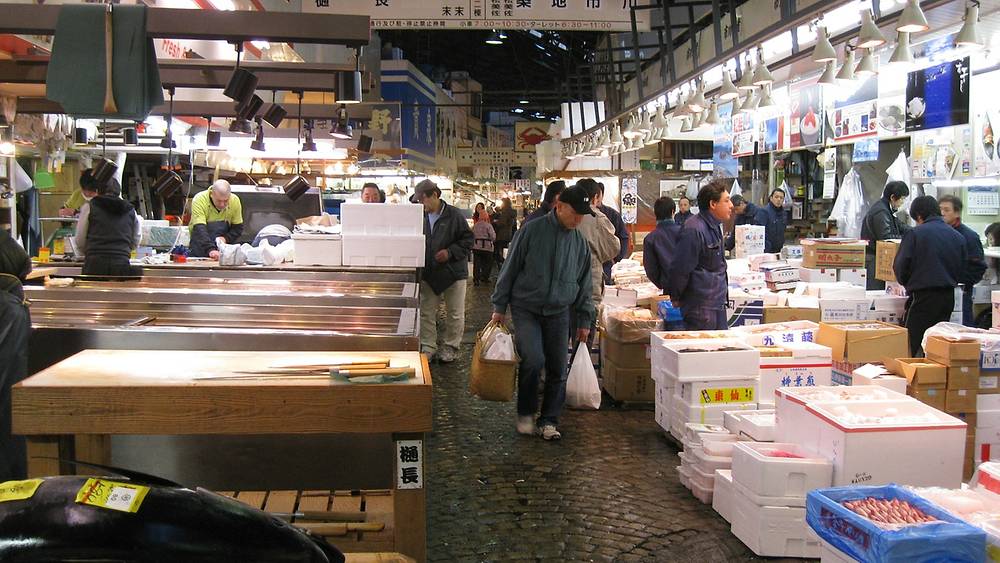Cargo news


Flying the short northern route with salmon from Norway to Asia
Top quality Norwegian salmon flies in Finnair’s cargo hold to Japan. Writer Tim Bird follows their journey from salmon farm to sushi restaurant.
I’m sitting in the Choushimaru sushi restaurant in Chiba, outside Tokyo, with a sliver of raw salmon glistening on a neat tube of rice before me.
I think back to the crisp March morning in a fjord with the snow-specked Norwegian mountains reflected in a breezeless sea.
My culinary moment is the culmination of a complex trail that has led from northern Norway, over Finnish Lapland to Finnair Cargo’s freight terminal at Helsinki Airport. In the belly of a Finnair Airbus, the salmon has crossed the Siberian tundra before being taken to Tokyo’s Tsukiji Fish Market. From there, it has made its way to the Choushimaru restaurant and my grateful taste buds.
First sighting
My voyage starts with a 30-minute motorboat ride to the seaward end of the fjord in the company of Håvard Hårstad and Renate Larsen, respectively production manager and managing director of the Lerøy Aurora seafood company. Our destination is the Lerøy salmon farm on Sessøy island.
As we approach, silver darts shoot out of the water within the giant hoops marking the enclosures. This is my first sighting of the salmon, whose numbers in this fish farm total around 1.86 million.
“Our main aim is good production,” says Hårstad. “If we don’t have good animal welfare, we don’t get a good product. Government regulations are quite strict.”
The giant hoops on the water’s surface are the uppermost rims of 55-meter-deep cages, and regulations require no more than 2.5 percent of their volume to be occupied by fish.
According to Hårstad, Lerøy meets the requirements of the strict ASC (Aquaculture Stewardship Council) environmental certification for salmon farming.
“Salmon farming is sustainable in various ways,” explains Larsen. “It only takes 1.05 kilos of feed to raise each kilo of fish. And no extra heating is required since the salmon are farmed at their natural temperature.”
Salmon’s plight
The second phase of my odyssey takes me on Norway’s coastal ferry for a four-hour voyage north to the small town of Skjervøy, the site of Lerøy’s fish farm. Site manager Jan-Børre Johansen joins me.
Later he keeps his promise of a drive into the mountains and a viewing of the phenomenon that gives the salmon brand its name: the Aurora Borealis.
The salmon follow me the next day in a special vessel containing vast fish tanks. Inside the factory, where cleanliness and hygiene are strictly observed, I watch plump salmon launch through the different stages of processing.
“The Aurora salmon for the Japanese market are packed with ice in sealed boxes,” explains quality manager Katrine Bones Enger. She guides me to a control room where computer monitors confirm that 61,000 kilos of salmon has been processed in the last 3.5 hours.
At the transport bay Finnish truck driver Joakim Haga watches with me as the fish boxes are lifted into the refrigerated container. The drive passes through Norway and Sweden to the Finnish border and then Oulu where another driver takes the wheel.
From there the road trip to Helsinki Airport is completed, and the salmon boxes are packed onto pallets and loaded into the cargo holds of a scheduled Finnair flight bound for Tokyo.
Flying fish
We arrive at Tokyo’s Narita Airport in the morning. Koki Yotsui of Lerøy Japan is there to take me to the nearby Nippon Express perishable storage terminal.
An hour or so later, the truck from the airport arrives carrying two pallets piled high with boxes of Aurora salmon. Less than 36 hours earlier the fish were swimming in the Norwegian fjords.
“Normally imported goods are not passed through customs until 4 pm on the day of arrival, but there is a fast track for the salmon,” says Masahiko Sugimura of importer Ocean Trading Co. Ltd.
My next appointment with the salmon is at 4 am the next morning at the famous Tsukiji Fish Market. Boxes of Aurora salmon are transported here from the storage at Narita a few hours earlier, and the first buyers have arrived, including Yuichi Sato of the Kakujo Gyorui fresh fish store chain.
“Aurora salmon is a popular brand,” he says. “But maybe our customers don’t know much about Norway. They might know something about the fjords.”
A spectacular auction
Later that morning we drive out to a suburb of western Tokyo to visit one of Kakujo Gyorui’s 22 stores where an Aurora promotion is in progress.
“Japanese people can tell the difference between deep frozen salmon and salmon that’s fresh,” explains Koki of Lerøy Japan.
The last stop is the Choushimaru sushi restaurant. I arrange my chopsticks and at last I can pop that salmon in my mouth and savor its texture. It tastes good to me, but how about my fellow customers?
I turn to a lady dining with her family. “I see the brand name whenever I come here and I love this salmon, it’s delicious,” says Yuki Kawano. “I can’t really say more than that.”